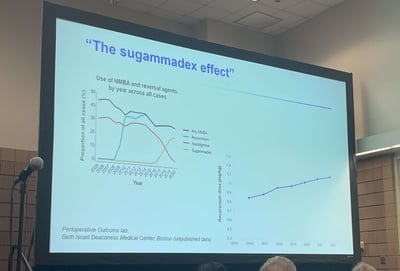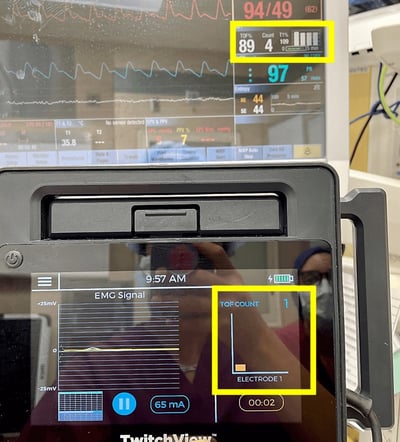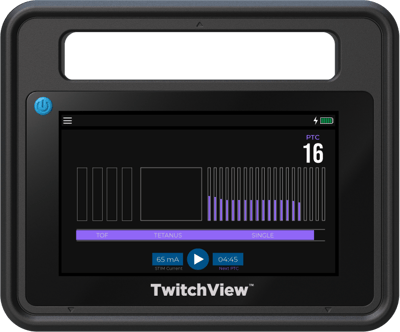
Quantitative Neuromuscular Monitors
Using TwitchView
TwitchView provides accurate, continuous data, but to positively impact care, the anesthesia provider must interpret and apply that data. We will provide tips on the clinical application of quantitative neuromuscular monitoring empowering you—the provider—to base your management of neuromuscular blockade on quantitative data just like you do with blood pressure, temperature, and every other important physiologic parameter.
Latest Posts


How to Monitor Succinylcholine-Induced Neuromuscular Blockade

Why Do the ASA Guidelines Recommend the Adductor Pollicis?

Anesthesia Experts Recommend These 4 Steps to Implement Quantitative Train of Four Monitoring

How Quantitative Train of Four Impacts Rocuronium Reversal

How to Implement the ASA Practice Guidelines for Neuromuscular Blockade

How to Pick the Best Quantitative Neuromuscular Monitoring Device for Your Anesthesia Department

How to Use Post-Tetanic Count (PTC) to Manage Neuromuscular Blockade
What is The Twitch?
Now that the American Society of Anesthesiologists and European Society of Anaesthesiology have published Neuromuscular Blockade Practice Guidelines recommending the routine use of quantitative neuromuscular monitors, change is imminent. Most anesthesia providers only have access to peripheral nerve stimulators, meaning they’ll need to incorporate a new device into their workflow and an unfamiliar parameter into their clinical practice.
The evidence is sound, but it doesn’t make change less difficult. To ease the transition and aid adoption, we’ve created The Twitch, a blog repository for all things neuromuscular blockade monitoring. Having spent the past decade building quantitative neuromuscular monitors and helping anesthesia departments introduce them as a standard of care, we’ve learned a few things. We created this blog to share our knowledge, and the knowledge of colleagues who have been on the front lines of this change. Whether you’re wondering how a TOF ratio is calculated, or looking for systemwide implementation best practices, we’re hoping you’ll find the answers here.
The TwitchView System provides quantitative monitoring of neuromuscular transmission, allowing clinicians to evaluate the degree of neuromuscular blockade following the administration of neuromuscular blocking agents. The content on this website and blog is for reference and educational purposes only and does not replace clinical judgment. Healthcare professionals should rely on their expertise, training, and relevant guidelines to inform their decisions.
